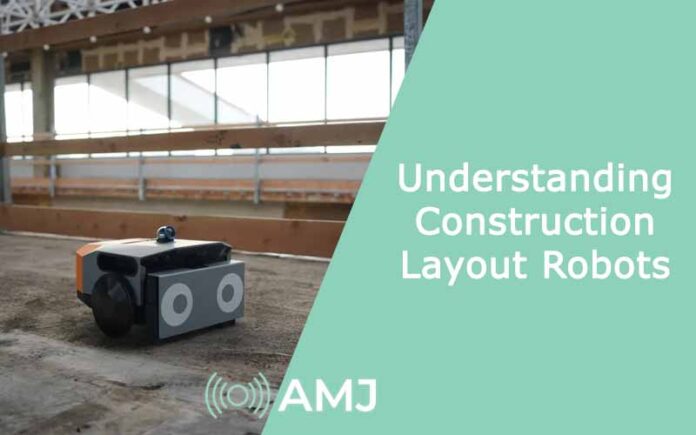The construction industry is encountering a technological revolution, with new advancements reshaping traditional methods. Among these innovations, construction layout robots are proving to be game-changers. These sophisticated machines enhance precision, efficiency, and safety in projects. This article provides an in-depth understanding of construction layout robots.
Highlighting their benefits, implications, and impact on the industry, these are essential in modern building processes. Their role is particularly pivotal in tasks such as construction layout robots in fire protection installation. Here, their precision and efficiency are critical. The benefits extend across various phases of construction, ensuring high standards of safety and effectiveness.
The Role of Construction Layout Robots
They are designed to perform tasks with high precision. They use advanced technologies such as GPS, laser scanning, and sensors to mark locations for structural elements accurately. This technology ensures that every component is positioned according to the design specifications, reducing the risk of errors. These are particularly useful in large-scale projects where manual techniques can be time-consuming and prone to mistakes.
Enhancing Precision and Accuracy
One of the primary benefits of these is their ability to provide unmatched precision and accuracy. Traditional methods rely heavily on human skill and can be influenced by various factors such as fatigue and environmental conditions. In contrast, these robots are equipped with advanced sensors and GPS technology that ensure consistent and accurate measurements. This precision is crucial for ensuring that projects adhere to design plans, reducing the need for rework and minimizing errors.
Improving Efficiency and Productivity
Efficiency is a critical factor in the success of construction projects. Delays can lead to escalated costs and missed deadlines. Construction layout robots significantly enhance efficiency by automating the layout process. These can quickly and accurately mark positions for structural elements, allowing construction teams to focus on other important tasks. This automation speeds up the building process and ensures that projects stay on schedule.
Enhancing Safety Standards
Safety is a top priority in the construction industry. Layout robots can significantly improve safety standards on building sites by automating the process. This reduces the need for workers to perform hazardous tasks, including working at heights or in confined spaces, which are common in traditional methods. By minimizing human involvement in these dangerous activities, layout robots help reduce the risk of accidents and injuries, creating a safer work environment.
Facilitating Complex Design Implementation
Modern building projects often involve complex designs that require precise execution. Construction layout robots are particularly beneficial in implementing these intricate designs. Their advanced technologies allow them to interpret detailed design plans and translate them into accurate physical layouts. This capability is essential for projects with unique architectural features or unconventional structures.
Cost Savings and Return on Investment
Cost management is a critical aspect of building projects. Errors and delays can lead to significant financial losses. Construction layout robots help mitigate these risks by ensuring precise and efficient execution of tasks. The reduction in rework and delays translates to substantial cost savings. Additionally, the increased productivity and safety brought about by these contribute to a higher return on investment (ROI). By minimizing the financial risks associated with human error and enhancing overall project efficiency, layout robots offer a compelling value proposition for building firms.
Supporting Sustainable Construction Practices
Sustainability is becoming progressively crucial in the construction industry. Layout robots contribute to sustainable practices by optimizing resource utilization. Their precision ensures that materials are used efficiently, reducing waste. Furthermore, task automation minimizes the need for excessive labor, lowering the carbon footprint associated with building activities. By promoting efficient and environmentally friendly practices, layout robots support the industry’s move towards sustainability.
Integration with Project Management Tools
Effective project management is essential for successful projects. Layout robots can integrate with various project management tools, providing accurate and timely data. This integration facilitates real-time monitoring and reporting of progress, permitting project managers to make informed decisions. Access to precise data helps identify potential issues early and implement corrective measures, ensuring that projects stay on track and within budget.
Future Prospects and Innovations
The future of construction lies in the continued integration of advanced technologies. Construction layout robots represent just the beginning of this technological revolution. Ongoing advancements in robotics, artificial intelligence, and machine learning are expected to enhance the capabilities of layout robots further. Future innovations include autonomous decision-making, advanced problem-solving abilities, and even greater precision.
Construction layout robots are transforming the building industry by introducing new precision, efficiency, and safety levels. These advanced machines offer numerous benefits, from reducing human error and enhancing worker safety to facilitating complex design implementation and supporting sustainable practices. Particularly, the use of construction layout robots in fire protection installation showcases their ability to meet critical safety standards. As the building industry continues to evolve, the adoption of these will become increasingly essential for modern building projects.












![Index of Money Heist [Season 1, 2, 3 & 4 – All Episodes, Cast and Plot] Index of Money Heist](https://www.asiamediajournal.com/wp-content/uploads/2021/05/Index-of-Money-Heist-3-100x70.jpg)